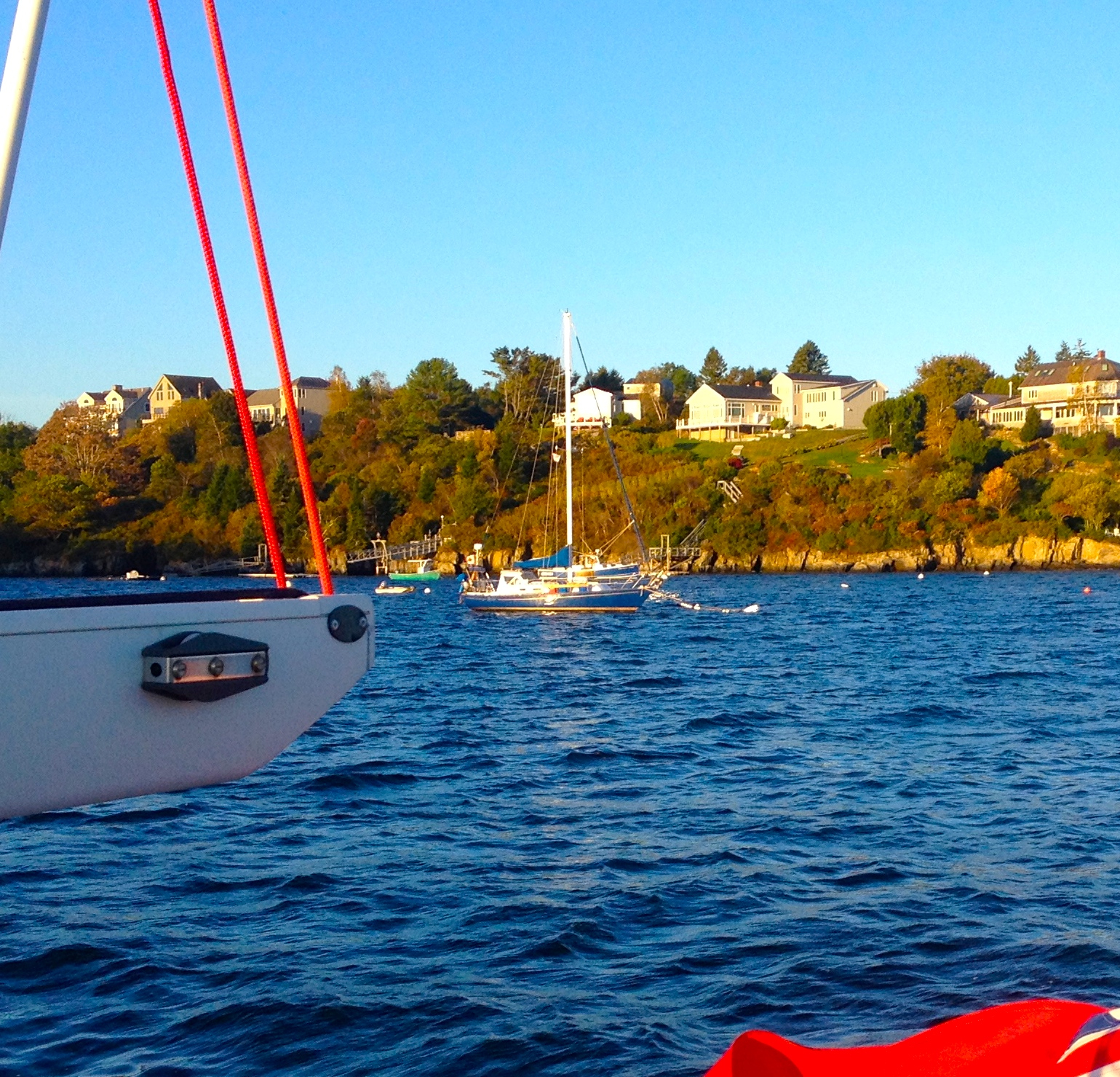Before the Dutch settled this island at the mouth of the Noortrivier in 1624 as a defensive position to maintain their colony in today’s Albany, they traded with the Indians here since 1611, from their ships.
In 1613, a Spaniard mulatto, born in Santo Domingo, arrived here as crew on the Jonge Tobias, a Dutch trading vessel. At the end of the trading season, rather than having to travel back to Holland with the ship, this Caribbean guy hitched up with a native girl and cashed out on his salary by persuading the captain to leave him in Manhattan with eighty hatchets and number of knives as trading goods, plus a sword, and a musket.
And so Juan Rodriguez became the first immigrant to New York City, 401 years ago.
Tonight Peregrinus anchors near where the Jonge Tobias may one day have anchored. The skyline certainly looks much better now.
At the left edge, The Empire State Building, illuminated in red. Right of it, with a white spire, the Chrysler Building. In the center, the World Trade Center buildings (WTC One opens Nov 3, 2014), and to their right, Wall Street and Downtown.






